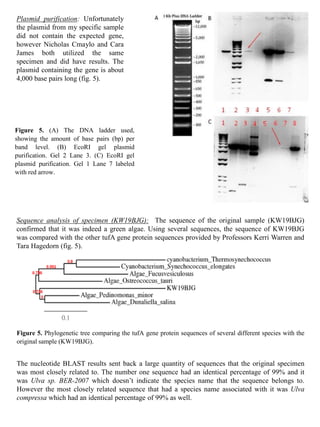Through genetic barcoding of the tufA gene, an unknown green algae specimen was identified as belonging to the Ulva compressa clade. DNA was isolated from the specimen and the tufA gene was amplified via PCR. The gene was cloned and the nucleotide sequence analyzed and compared to sequences in GenBank. Phylogenetic analysis indicated the specimen was most similar to Ulva sp. BER-2007, but could not be identified to the species level. While in the U. compressa clade, further testing is needed to confirm its identity as a potential new species of Ulva in Narragansett Bay.





